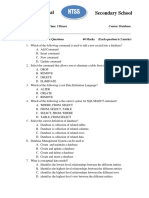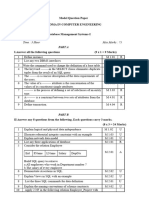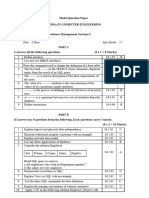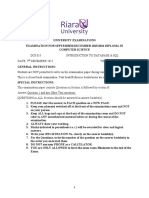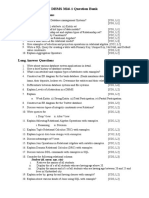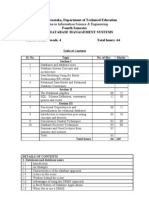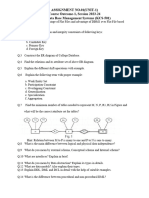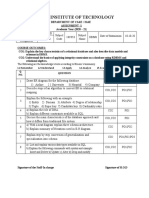0% found this document useful (0 votes)
17 views1 pageDBMS Assignment1
The document outlines an assignment with ten questions related to Database Management Systems (DBMS). It covers topics such as the need for DBMS, advantages and disadvantages, schema architecture, ER-Diagrams, SQL statements, and key differences among various database concepts. Each question is assigned specific marks and categorized by course outcomes and performance indicators.
Uploaded by
SACHIN VERMACopyright
© © All Rights Reserved
We take content rights seriously. If you suspect this is your content, claim it here.
Available Formats
Download as DOCX, PDF, TXT or read online on Scribd
0% found this document useful (0 votes)
17 views1 pageDBMS Assignment1
The document outlines an assignment with ten questions related to Database Management Systems (DBMS). It covers topics such as the need for DBMS, advantages and disadvantages, schema architecture, ER-Diagrams, SQL statements, and key differences among various database concepts. Each question is assigned specific marks and categorized by course outcomes and performance indicators.
Uploaded by
SACHIN VERMACopyright
© © All Rights Reserved
We take content rights seriously. If you suspect this is your content, claim it here.
Available Formats
Download as DOCX, PDF, TXT or read online on Scribd
/ 1

















